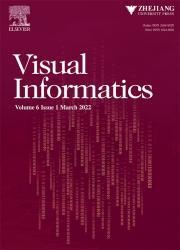Visual analysis of LLM-based entity resolution from scientific papers
IF 3.8
3区 计算机科学
Q2 COMPUTER SCIENCE, INFORMATION SYSTEMS
引用次数: 0
Abstract
This paper focuses on the visual analytics support for extracting domain-specific entities from extensive scientific literature, a task with inherent limitations using traditional named entity resolution methods. With the advent of large language models (LLMs) such as GPT-4, significant improvements over conventional machine learning approaches have been achieved due to LLM’s capability on entity resolution integrate abilities such as understanding multiple types of text. This research introduces a new visual analysis pipeline that integrates these advanced LLMs with versatile visualization and interaction designs to support batch entity resolution. Specifically, we focus on a specific material science field of Metal-Organic Frameworks (MOFs) and a large data collection namely CSD-MOFs. Through collaboration with domain experts in material science, we obtain well-labeled synthesis paragraphs. We propose human-in-the-loop refinement over the entity resolution process using visual analytics techniques, which allows domain experts to interactively integrate insights into LLM intelligence, including error analysis and interpretation of the retrieval-augmented generation (RAG) algorithm. Our evaluation through the case study of example selection for RAG demonstrates that this visual analysis approach effectively improves the accuracy of single-document entity resolution.
科学论文中基于llm的实体解析可视化分析
本文的重点是可视化分析支持从广泛的科学文献中提取特定领域的实体,这是使用传统的命名实体解析方法具有固有局限性的任务。随着像GPT-4这样的大型语言模型(LLM)的出现,由于LLM在实体解析集成能力(如理解多种类型的文本)方面的能力,比传统的机器学习方法有了显著的改进。本研究引入了一种新的可视化分析管道,该管道将这些先进的llm与多功能可视化和交互设计集成在一起,以支持批量实体解析。具体来说,我们专注于金属有机框架(MOFs)的特定材料科学领域和大量数据收集,即CSD-MOFs。通过与材料科学领域的专家合作,我们获得了标记良好的合成段落。我们建议使用可视化分析技术对实体解析过程进行人在环优化,这使得领域专家能够交互式地将见解集成到LLM智能中,包括错误分析和对检索增强生成(RAG)算法的解释。通过RAG的示例选择案例研究,我们的评估表明,这种可视化分析方法有效地提高了单文档实体解析的准确性。
本文章由计算机程序翻译,如有差异,请以英文原文为准。
求助全文
约1分钟内获得全文
求助全文
来源期刊

Visual Informatics
Computer Science-Computer Graphics and Computer-Aided Design
CiteScore
6.70
自引率
3.30%
发文量
33
审稿时长
79 days
 求助内容:
求助内容: 应助结果提醒方式:
应助结果提醒方式:


